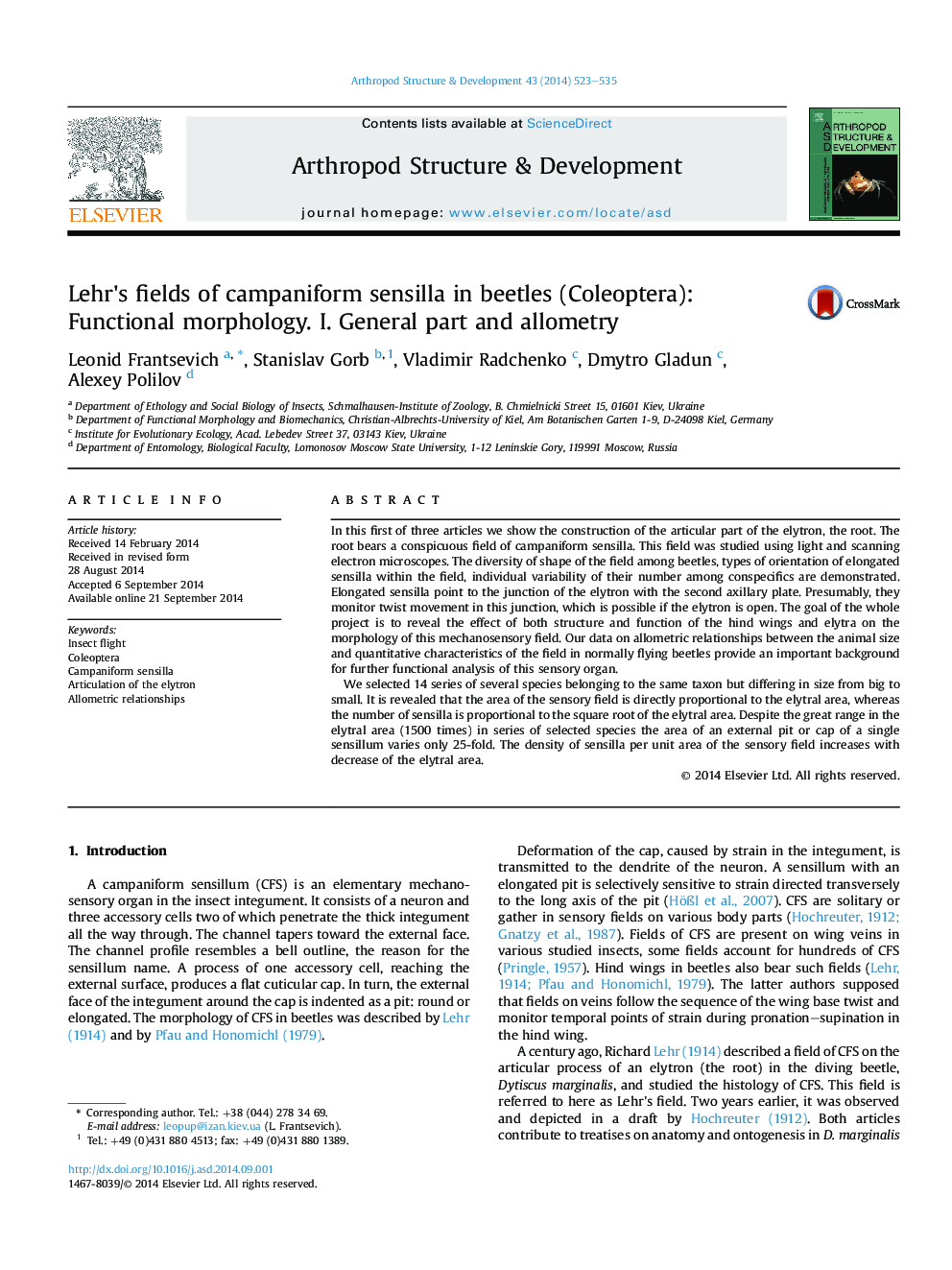| Article ID | Journal | Published Year | Pages | File Type |
|---|---|---|---|---|
| 2778664 | Arthropod Structure & Development | 2014 | 13 Pages |
•A field of campaniform sensilla is situated on the root of the elytron.•Shapes of the field and sensilla are described.•The sensory field presumably monitors forces applied to the elytron only in the open state of the elytron.•Relationships between the size of the elytron, size of the field, size and number of sensilla are analyzed.•Allometry in flying beetles is the background for further functional analysis.
In this first of three articles we show the construction of the articular part of the elytron, the root. The root bears a conspicuous field of campaniform sensilla. This field was studied using light and scanning electron microscopes. The diversity of shape of the field among beetles, types of orientation of elongated sensilla within the field, individual variability of their number among conspecifics are demonstrated. Elongated sensilla point to the junction of the elytron with the second axillary plate. Presumably, they monitor twist movement in this junction, which is possible if the elytron is open. The goal of the whole project is to reveal the effect of both structure and function of the hind wings and elytra on the morphology of this mechanosensory field. Our data on allometric relationships between the animal size and quantitative characteristics of the field in normally flying beetles provide an important background for further functional analysis of this sensory organ.We selected 14 series of several species belonging to the same taxon but differing in size from big to small. It is revealed that the area of the sensory field is directly proportional to the elytral area, whereas the number of sensilla is proportional to the square root of the elytral area. Despite the great range in the elytral area (1500 times) in series of selected species the area of an external pit or cap of a single sensillum varies only 25-fold. The density of sensilla per unit area of the sensory field increases with decrease of the elytral area.
Graphical abstractFigure optionsDownload full-size imageDownload as PowerPoint slide
